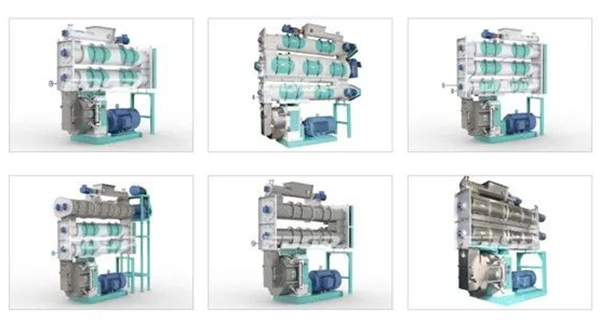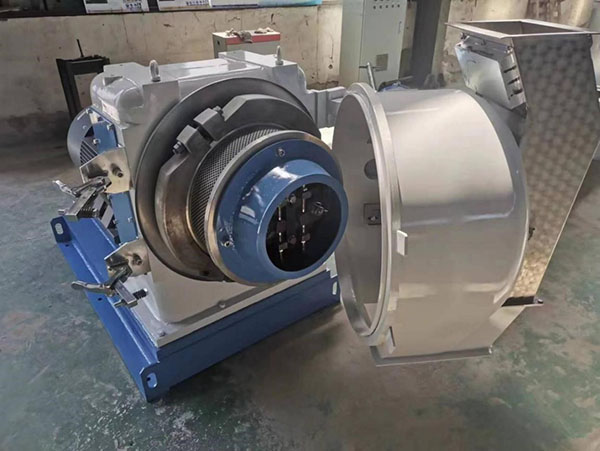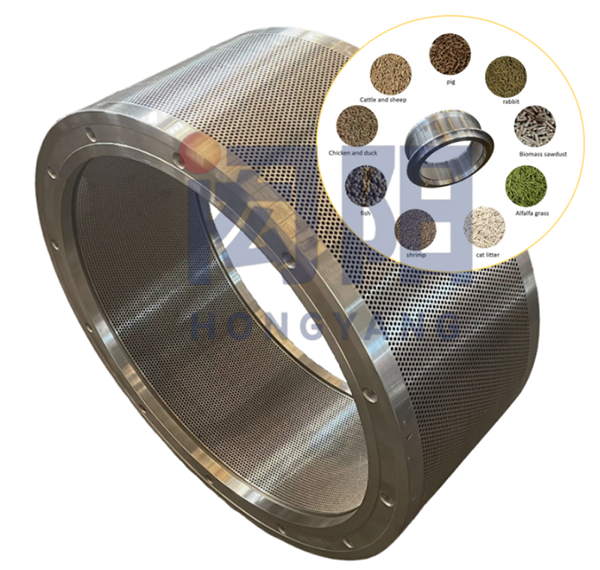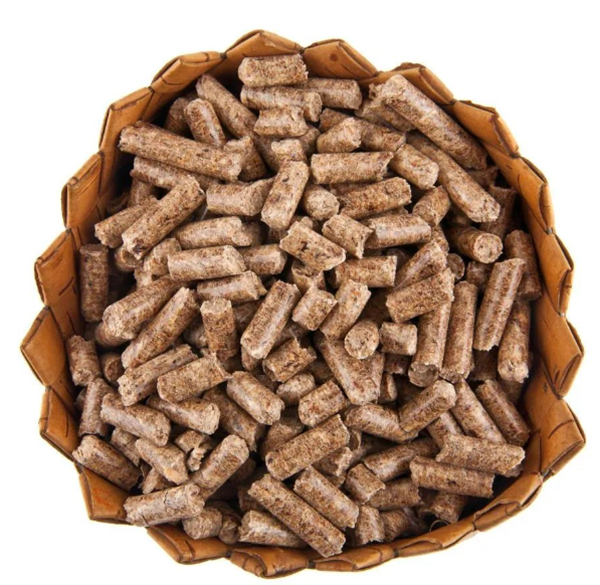In the actual production of feed, due to various reasons, a “material pot” can be formed between the ring die and the pressure roller, leading to problems such as jamming, blockage, and slipping of the granulator.
 We have drawn the following conclusions through practical analysis and experience of the case site:
We have drawn the following conclusions through practical analysis and experience of the case site:
1、Raw material factors
Materials with high starch content are prone to steam gelatinization and have a certain viscosity, which is conducive to molding; For materials with high coarse fibers, a quantitative amount of grease needs to be added to reduce friction during the granulation process, which is beneficial for the material to pass through the ring mold and the resulting granular material has a smooth appearance.
2、Improper die roll clearance
The gap between the mold rollers is too large, causing the material layer between the mold rollers to be too thick and unevenly distributed. The pressure roller is prone to slipping due to uneven force, and the material cannot be squeezed out, resulting in machine blockage. To reduce machine blockage, attention should be paid to adjusting the gap between the mold rollers during production, usually 3-5mm is preferred.
The ideal conditions for the granulation process are: appropriate moisture content of the raw material, excellent steam quality, and sufficient tempering time. To ensure good particle quality and high output, in addition to the normal operation of various transmission parts of the granulator, the quality of dry saturated steam entering the granulator’s conditioner should also be ensured.
The poor quality of steam results in high moisture content of the material when exiting the conditioner, which can easily cause blockage of the mold hole and slipping of the pressure roller during the granulation process, resulting in clogging of the machine. Specifically manifested in:
① Insufficient steam pressure and high moisture content can easily cause the material to absorb too much water. At the same time, when the pressure is low, the temperature when the material is tempered is also low, and the starch cannot gelatinize well, resulting in poor granulation effect;
② The steam pressure is unstable, fluctuating from high to low, and the material quality is unstable, resulting in large fluctuations in the current of the granulator, uneven material thirst, and easy blockage during normal production processes.
To reduce the number of machine stoppages caused by steam quality, feed factory operators need to pay attention to the moisture content of the material after tempering at any time. The simple way to determine is to grab a handful of material from the conditioner and hold it in a ball, and let go to just scatter it.
Generally speaking, when a new ring die is first used, it needs to be ground with oily materials, with an appropriate increase of about 30% of emery sand, and ground for about 20 minutes; If there are multiple materials in the granulation chamber, and the current decreases compared to grinding, it is relatively stable, and the fluctuation is small. At this time, the machine can be stopped and the granulation situation can be checked. The granulation is uniform and reaches over 90%. At this point, use oily materials to press in and replace the sand material to prevent the next blockage.
If the ring mold is blocked during the production process, many feed factories use electric drills to drill out the material, which will damage the smoothness of the mold hole and be detrimental to the aesthetics of the particles.
A better recommended method is to boil the ring mold in oil, which is to use an iron oil pan, put waste engine oil into it, immerse the blocked mold in it, and then heat and steam it at the bottom until there is a cracking sound, and then take it out. After cooling, the installation is completed, and the granulator is restarted according to the operating specifications. The materials blocking the ring mold can be quickly cleaned without damaging the particle finish.
Post time: Jul-19-2023















